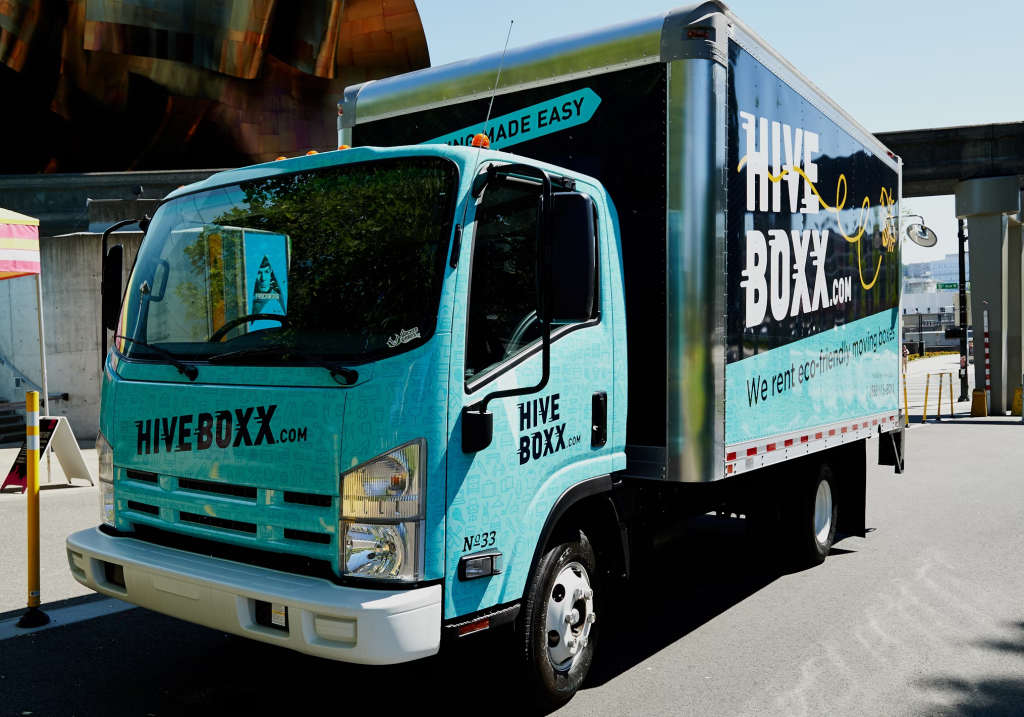Melbourne, known for its bustling city life and iconic culture, is also known for heavy traffic. This can pose significant challenges for removalists who must navigate the city’s roads and deliver goods promptly and safely.
Traffic congestion, roadworks, and unpredictable weather conditions can all complicate the job for local removalists. However, with their extensive experience and local knowledge, they have developed various strategies to manage these challenges efficiently.

Check out our website for helpful tips and detailed content to make your move smoother despite Melbourne’s traffic.
Understanding Melbourne’s Traffic Landscape
Melbourne’s traffic can be a maze of challenges, especially for removalists who must travel through different neighbourhoods, deal with parking restrictions, and ensure their trucks navigate busy streets. The city’s roads are often congested, particularly during peak hours, which can delay removal.
Key Factors Impacting Traffic In Melbourne
- Peak Traffic Hours
Like many major cities, Melbourne experiences peak traffic periods during mornings (7-9 AM) and afternoons (4-6 PM). During these times, major routes, including the Monash Freeway and CityLink, can become gridlocked, making it difficult for removalists to reach their destination quickly. - Roadworks and Construction Zones
Melbourne is constantly under development, and roadworks are a regular occurrence. These ongoing projects can significantly reduce the number of available lanes, causing further congestion and delays for removalists. - Accidents and Road Closures
Accidents, whether minor or severe, can disrupt traffic flow. When accidents occur on key routes or intersections, removalists may find themselves stuck in traffic or forced to reroute, adding extra time to their schedules. - Public Events and Festivals
Melbourne hosts numerous events, such as the Australian Open, AFL games, and festivals, which can cause temporary road closures or increased traffic. Removalists need to be aware of these events when planning their routes. - Weather Conditions
Melbourne’s unpredictable weather, ranging from heavy rain to extreme heat, can impact driving conditions. Wet weather, for example, can slow traffic and make driving hazardous, while heat waves can affect the equipment and goods being moved.
How Local Removalists Plan For Traffic?
Local removalists in Melbourne are well-versed in the city’s traffic challenges. They employ various strategies to minimise delays and ensure timely deliveries.
Route Planning And Traffic Monitoring
One of the most effective ways removalists handle traffic challenges is through careful route planning. Before setting off, they use traffic monitoring tools and apps like Google Maps or Waze to check real-time traffic conditions. These tools update traffic congestion, accidents, and roadworks, allowing removalists to adjust their routes accordingly.
Tools Used By Removalists:
- Google Maps
This widely used app offers real-time traffic data, helping removalists identify the quickest routes and avoid congested areas. - Waze
Known for its community-driven updates, Waze allows users to share real-time information about accidents, police activity, and road closures. - Traffic Management Apps
Some removalists use specialised traffic management software that integrates live data from various sources, enabling them to adjust their plans on the fly.
By using these tools, removalists can avoid high-traffic areas and plan alternative routes, ensuring they meet their deadlines.
Scheduling Jobs During Off-Peak Hours
Another strategy employed by local removalists is scheduling moves during off-peak traffic hours. Most removalists prefer to schedule work for early mornings or mid-afternoons when traffic is lighter. This approach helps them avoid the congestion of rush hours, making the move more efficient.
Benefits Of Off-Peak Scheduling:
- Faster Travel Times: Reduced traffic allows for quicker movement across the city.
- Better Parking Availability: Finding parking spaces near the property becomes easier during off-peak hours.
- Less Stress for Removalists: Fewer cars on the road mean less stress navigating through Melbourne’s busy streets.
Use Of Smaller Trucks
While large removal trucks are essential for moving larger items, using smaller vehicles can be more advantageous when dealing with traffic challenges. Smaller trucks are more manoeuvrable and can easily navigate narrow streets or congested areas. This approach is particularly helpful in Melbourne’s inner suburbs, where parking spaces can be tight and traffic can be unpredictable.
Advantages Of Smaller Trucks:
- Better Accessibility: Smaller trucks can access locations that larger trucks cannot, particularly in crowded urban areas.
- Faster Parking: Finding a spot to park a small truck is much easier than parking a large removal truck.
- Less Road Congestion: Smaller vehicles contribute less to overall traffic congestion, making it easier for removalists to get from point A to point B.
Knowledge Of Local Shortcuts
Local removalists in Melbourne possess intimate knowledge of the city’s streets and hidden shortcuts. These shortcuts are often not found on navigation apps but are well-known to locals. Removalists can bypass major roads and avoid traffic bottlenecks by utilising these routes.
Common Shortcuts And Strategies:
- Local Streets and Alleys: In densely populated areas, taking smaller, less busy streets can help removalists save time.
- Public Transport Lanes: Depending on the regulations, removalists may be able to use lanes reserved for public transport in some cases.
- Bypass Roads: Roads like the Western Ring Road or Eastern Freeway often provide faster routes than city streets.
Real-Time Communication With Clients
Effective communication with clients is essential for overcoming traffic challenges. Removalists keep their clients updated on their expected arrival times, especially if they anticipate traffic delays. By maintaining open lines of communication, clients can adjust their plans if necessary, reducing the pressure on removalists.
Benefits Of Real-Time Communication:
- Client Satisfaction: Keeping clients informed ensures they do not wonder about the arrival time.
- Flexibility: Clients may be able to make adjustments on their end if delays are expected.
- Avoiding Stress: Both the removalist and the client can plan accordingly, reducing stress on the day of the move.
Preparation For Unexpected Delays
Despite all the planning, traffic delays can still occur. Removalists in Melbourne always prepare for unforeseen circumstances. This may include having a buffer period built into the schedule to account for unexpected delays, such as accidents or sudden weather changes.
How Removalists Prepare:
- Time Buffers: Allowing extra time between appointments helps ensure that one delay doesn’t affect the entire schedule.
- Contingency Plans: Removalists have backup routes and alternative solutions if the original plan is disrupted.
- Vehicle Maintenance: Ensuring the vehicle is in optimal condition helps avoid breakdowns and delays during the move.
Technology’s Role In Traffic Management For Removalists
Technology is increasingly playing a significant role in helping removalists manage traffic challenges. From GPS tracking to real-time updates, technological advancements have made it easier for removalists to stay on top of traffic conditions and plan accordingly.
Benefits Of Technology In Traffic Management:
- Real-Time Traffic Data: Apps like Google Maps and Waze provide live updates on traffic conditions, helping removalists avoid delays.
- GPS Fleet Tracking: Fleet tracking systems enable removalists to monitor their vehicles in real time, ensuring they stay on schedule.
- Automated Scheduling: Some removalists use software to automatically schedule jobs based on traffic data, ensuring the most efficient routes are selected.
Conclusion
Handling traffic challenges in Melbourne is no easy task, but local removalists have developed effective strategies to ensure smooth and timely moves. Removalists can minimise delays and provide better client services by planning routes, avoiding peak traffic hours, using smaller trucks, and relying on their local knowledge.
With the help of technology, removalists are more equipped than ever to handle Melbourne’s traffic, making moving in this vibrant city a little less stressful.
Frequently Asked Questions
What Are The Busiest Traffic Times For Removalists In Melbourne?
The busiest traffic times in Melbourne are typically during peak hours, which occur from 7 AM to 9 AM and 4 PM to 6 PM. During these times, main roads and highways, such as the Monash Freeway and CityLink, experience heavy congestion. To avoid delays, many removalists prefer to schedule their jobs outside these peak hours, either early in the morning or mid-afternoon.
How Do Removalists Avoid Traffic In Melbourne?
Removalists in Melbourne use route planning and traffic monitoring tools, like Google Maps and Waze, to stay updated on real-time traffic conditions. They also leverage their local knowledge to take shortcuts and smaller streets that are less congested. Additionally, removalists can avoid heavy traffic by scheduling moves during off-peak hours and ensure a more efficient moving process.
Does Weather Affect The Timing Of A Move In Melbourne?
Yes, weather conditions can significantly impact the timing of a move in Melbourne. Heavy rain or extreme heat can slow traffic and make driving more hazardous. Removalists are well-prepared for such challenges, often allowing extra time for potential delays and keeping clients informed about any changes to the schedule due to weather-related disruptions.
